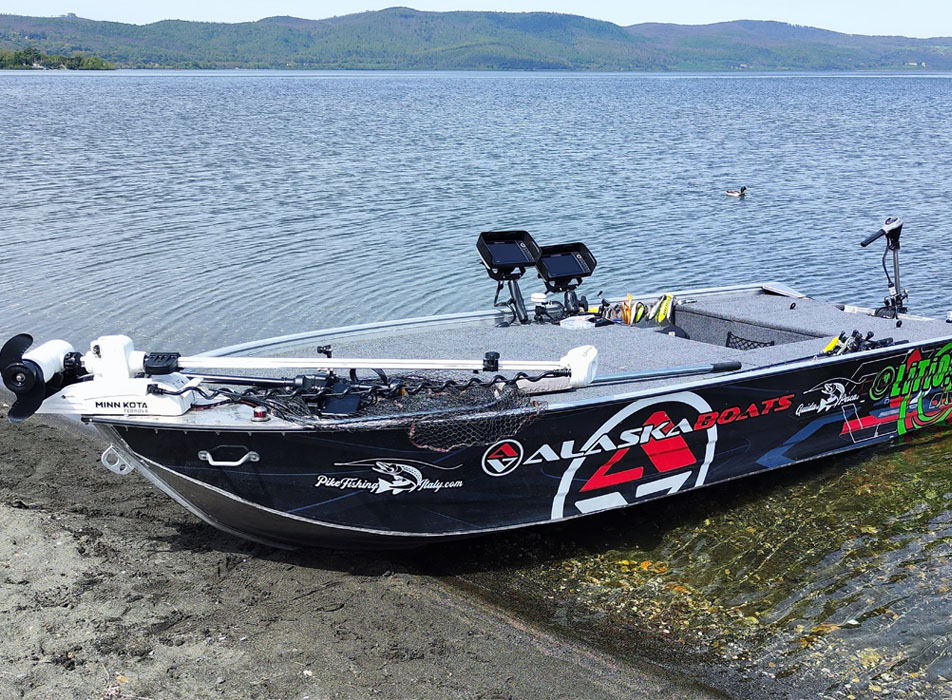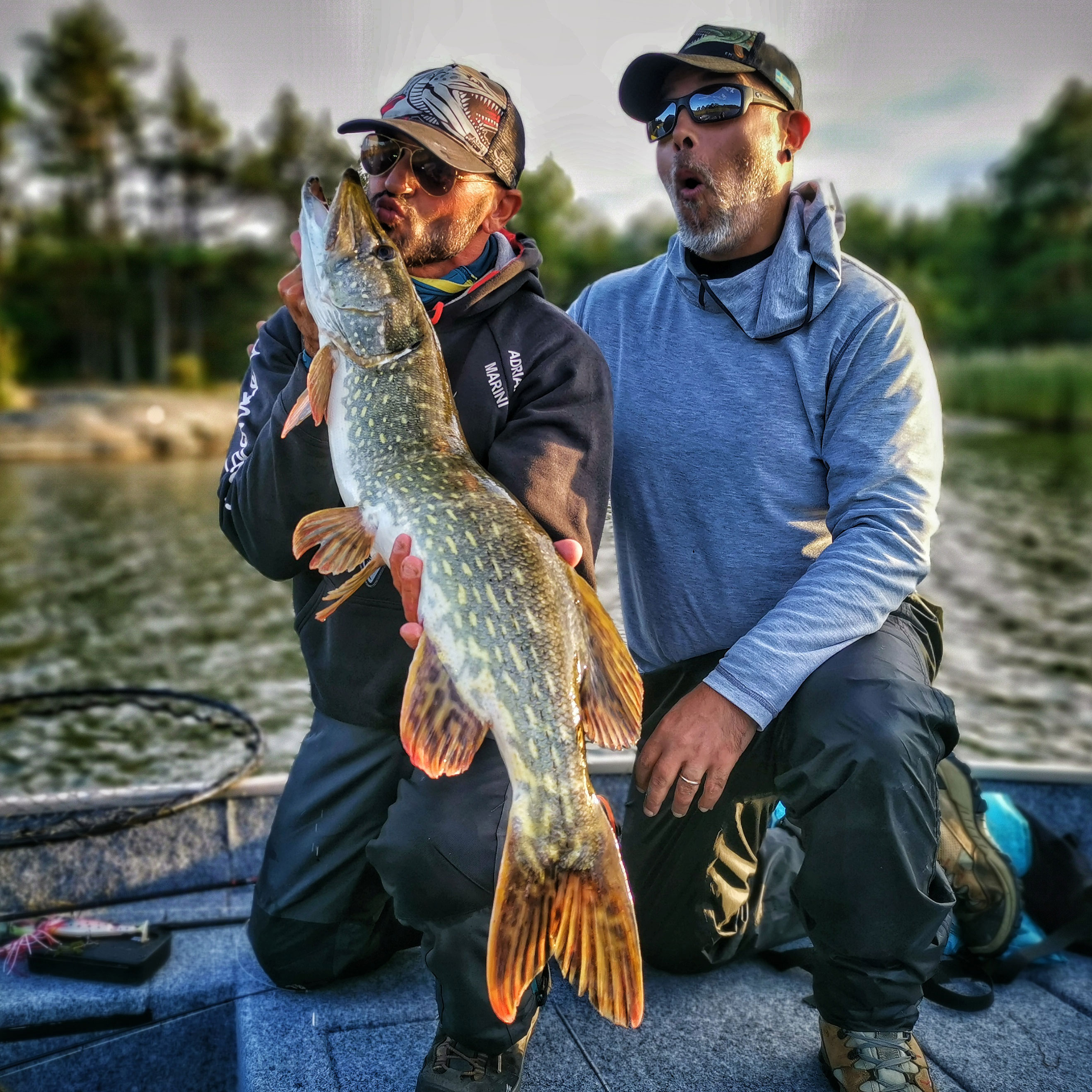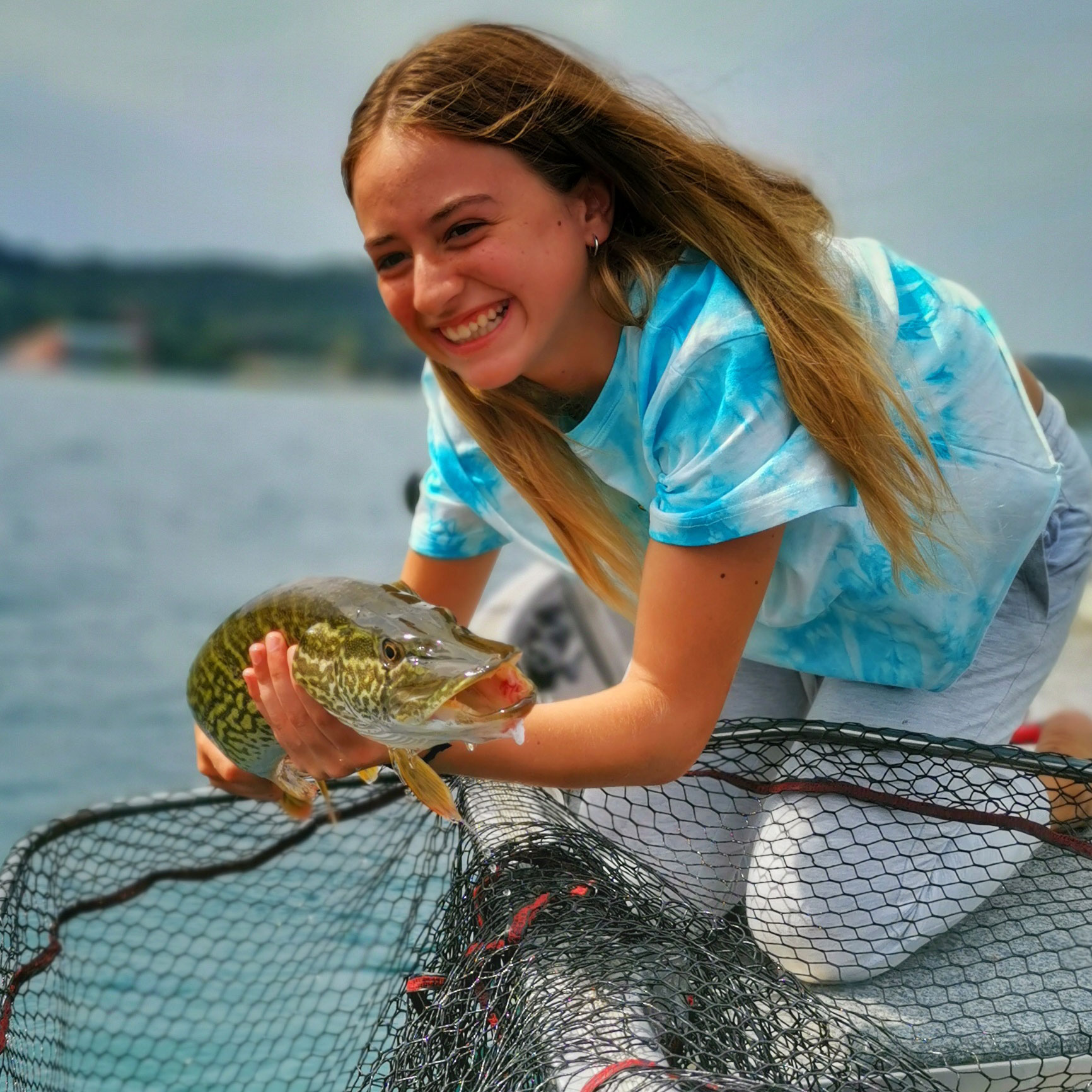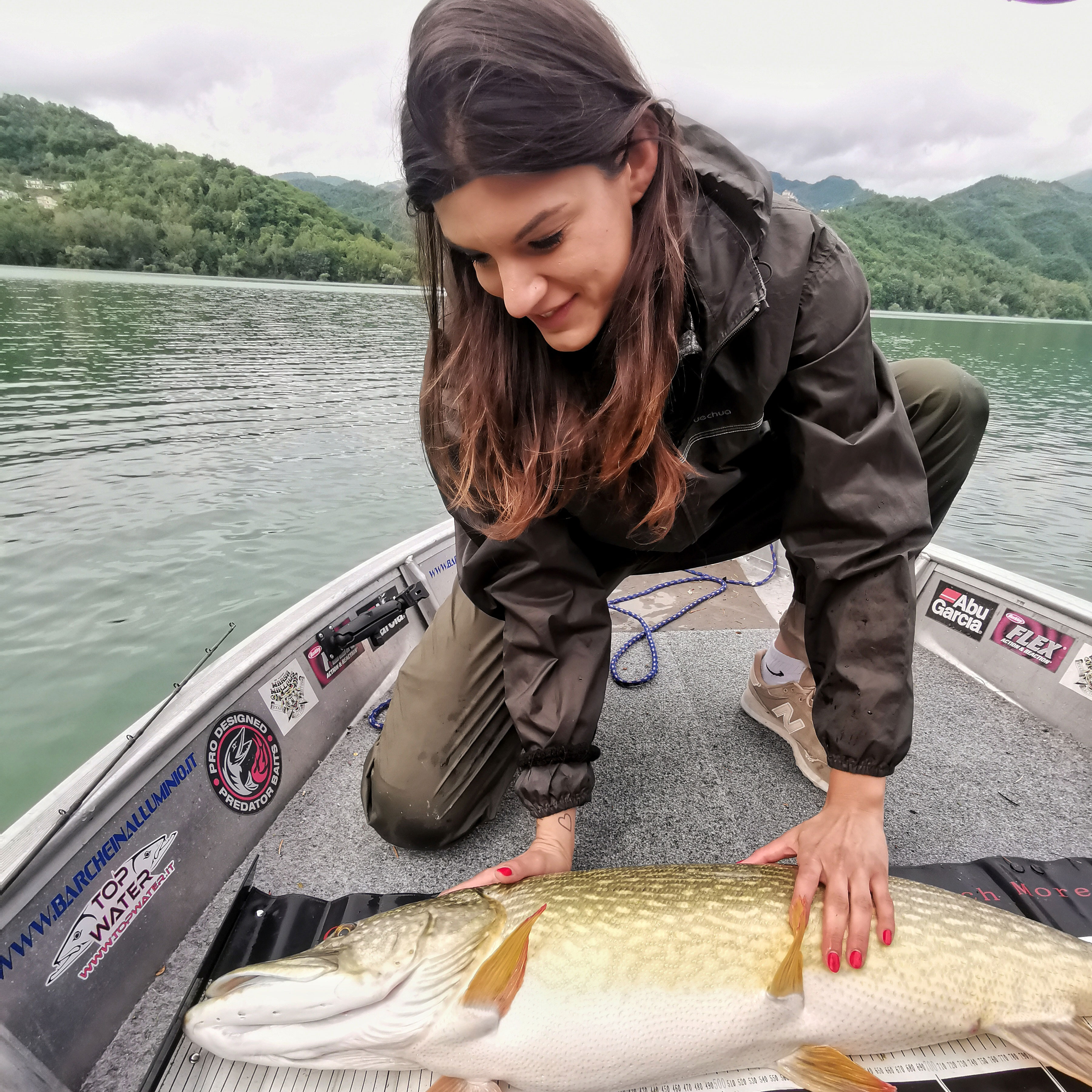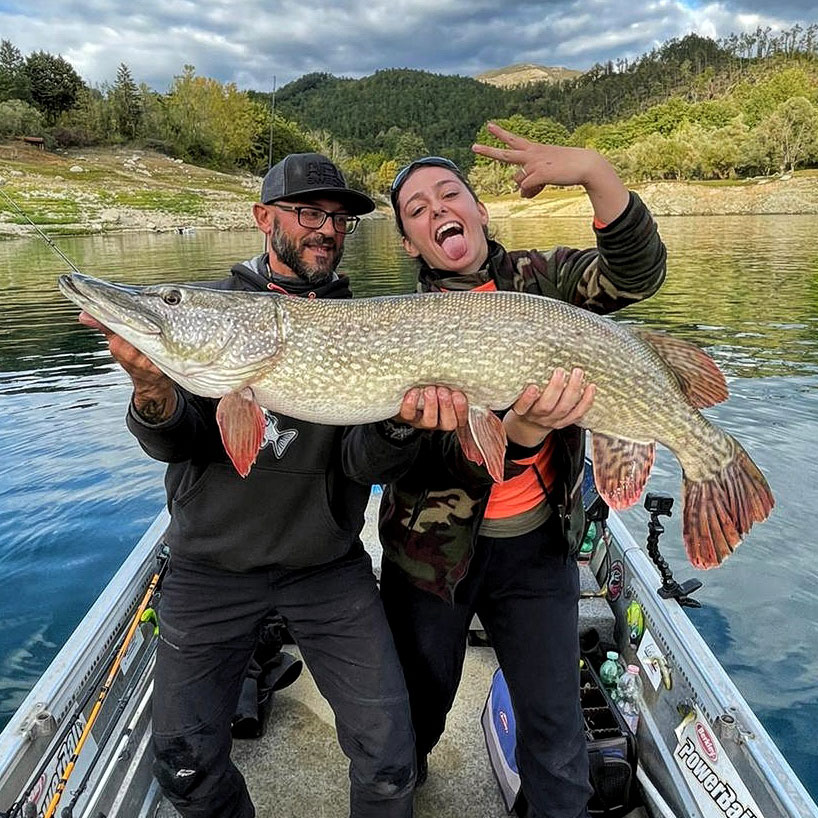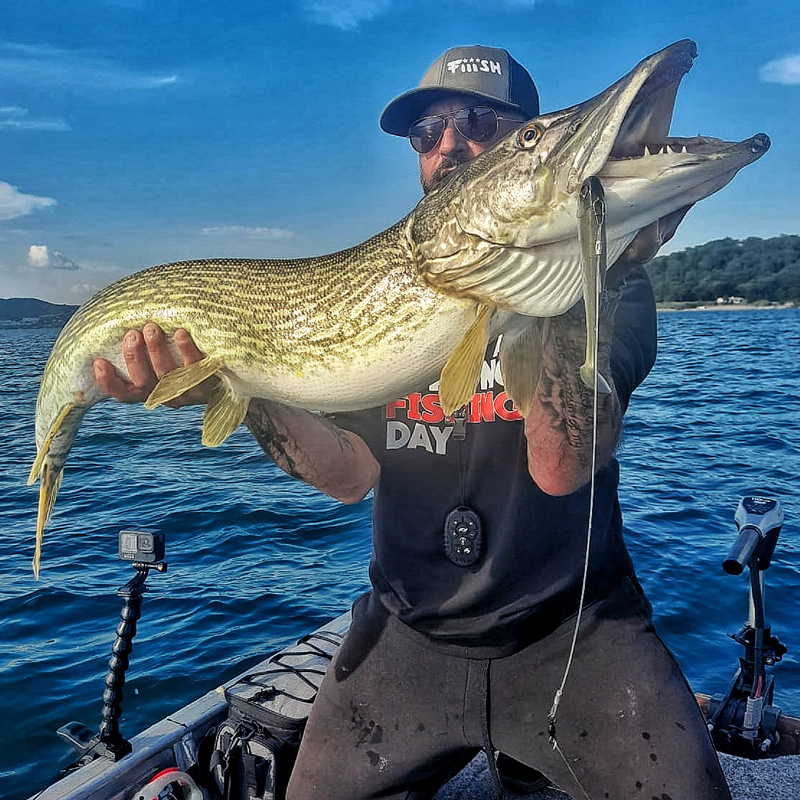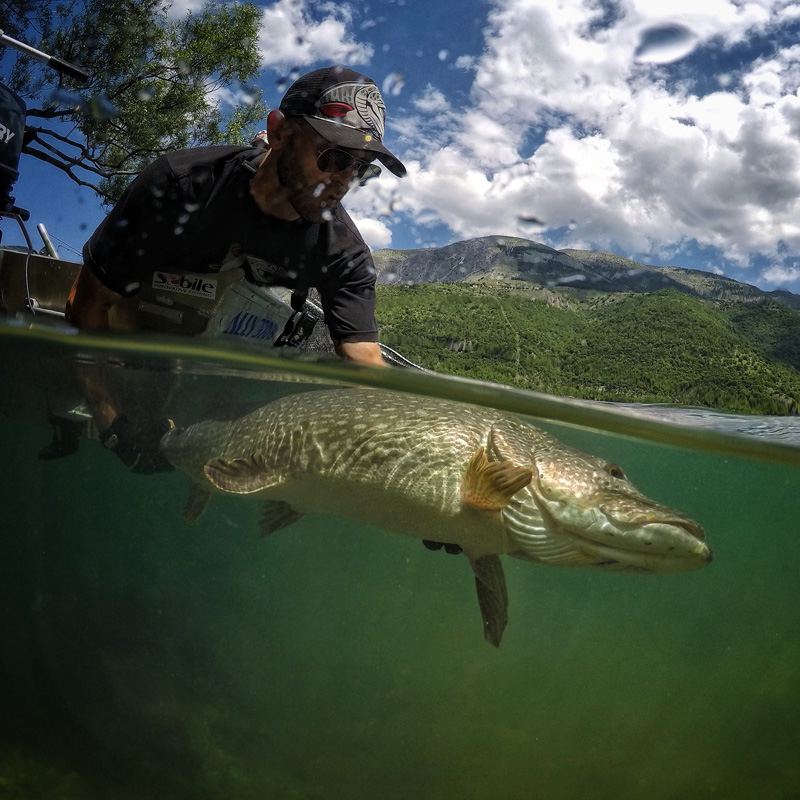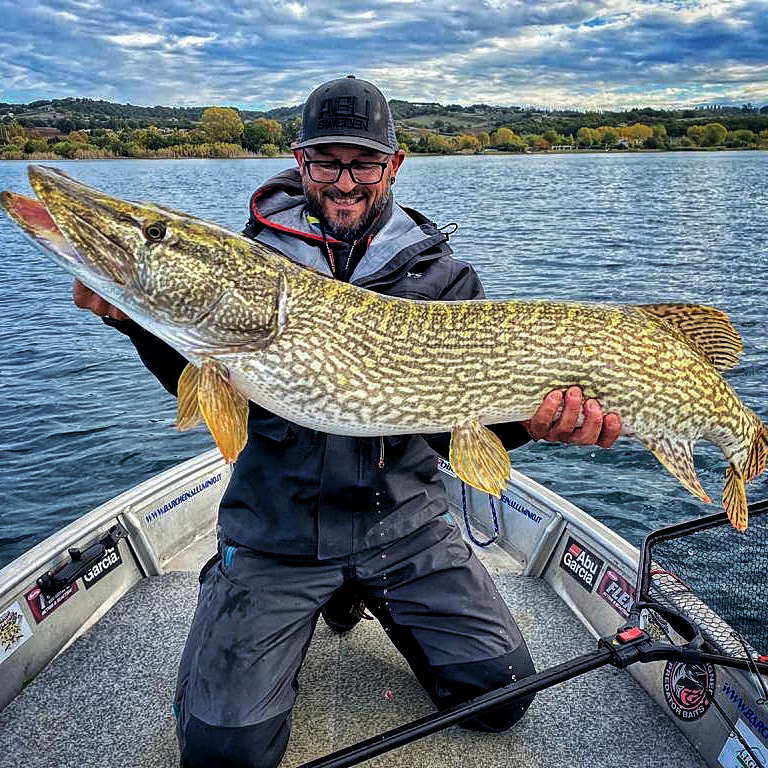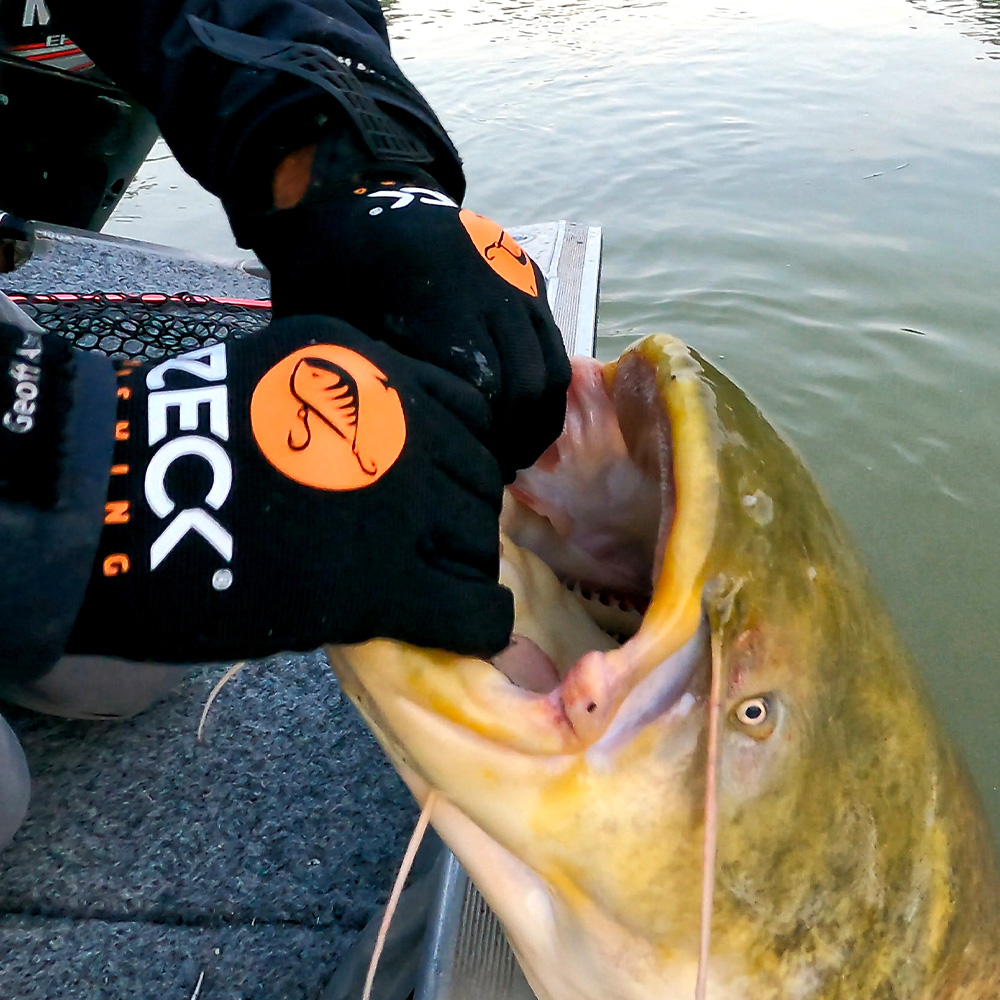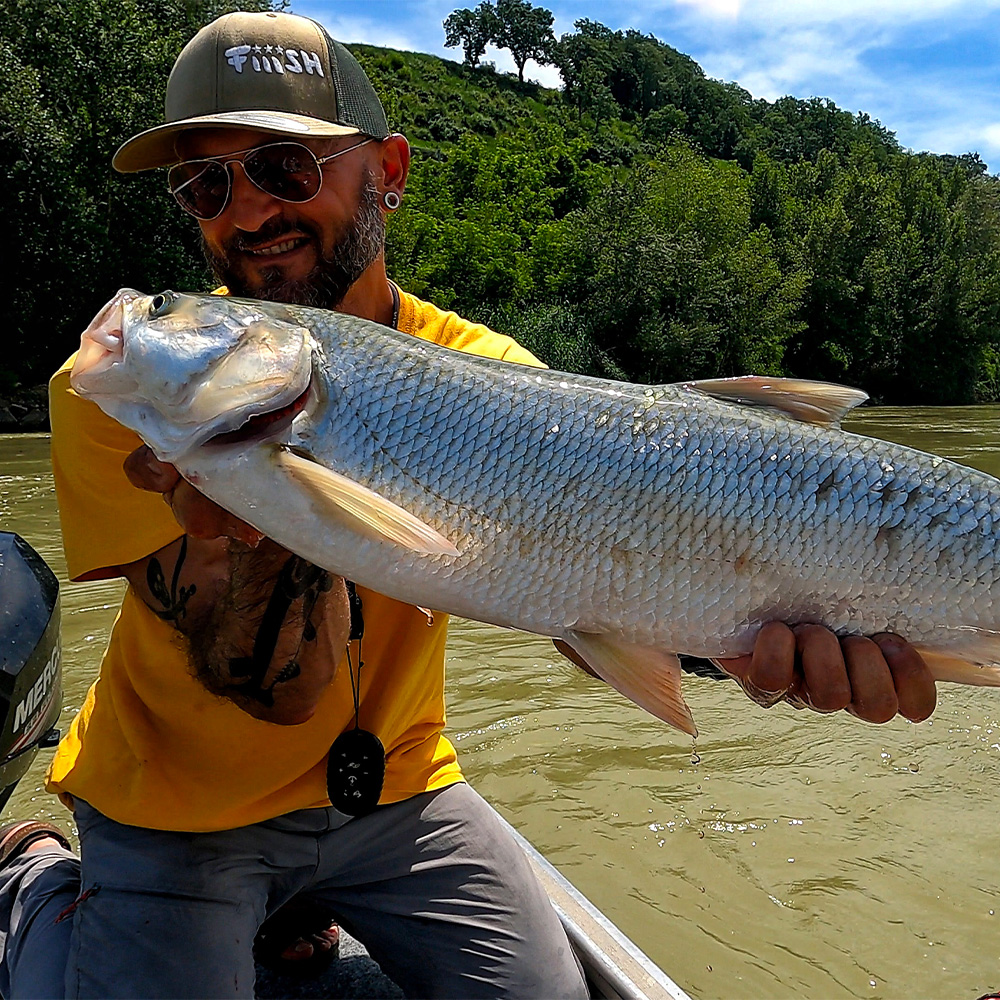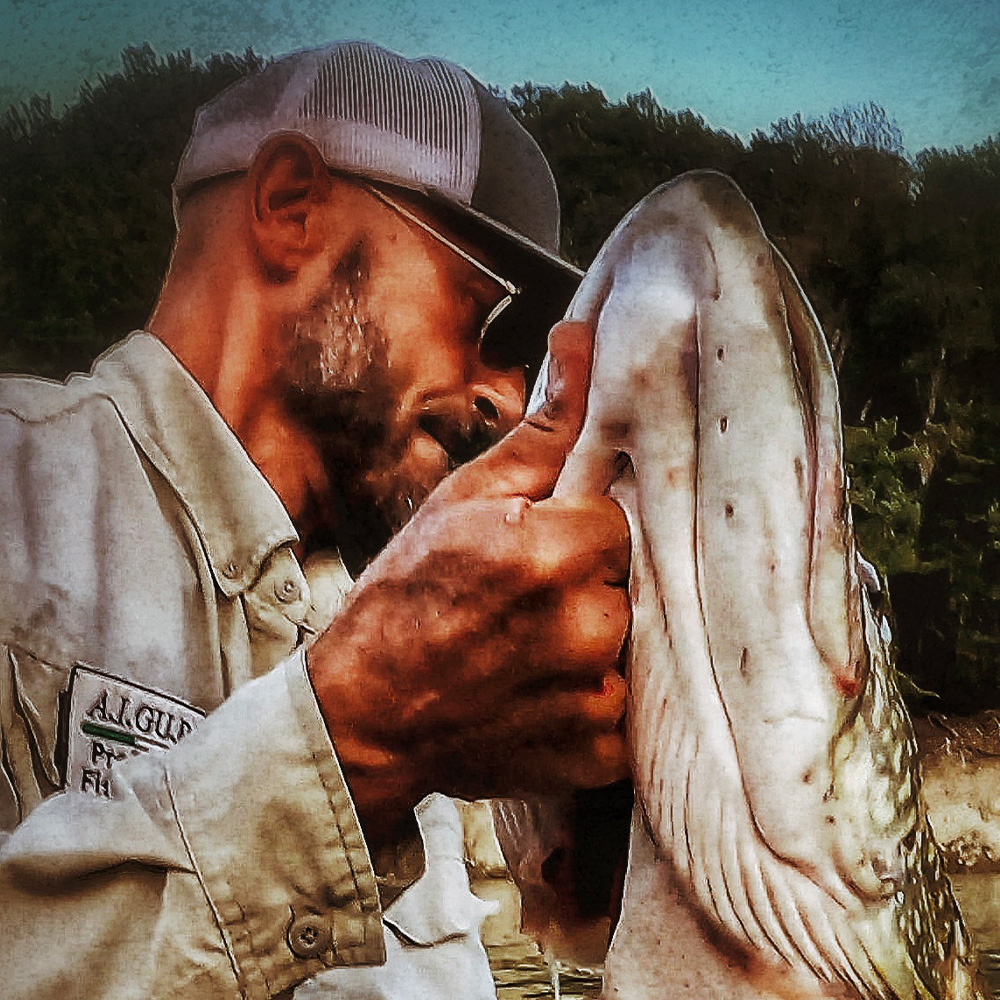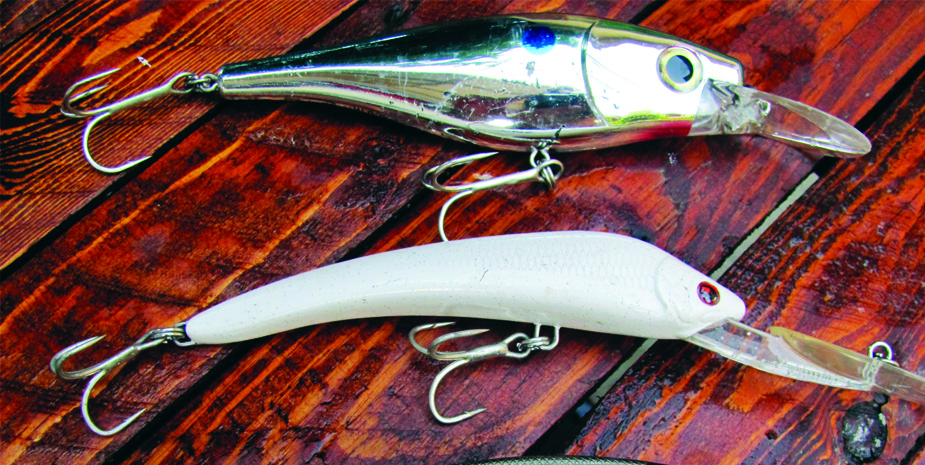
Crankbaits and Minnows
Casting large crankbaits and minnows gives me the same satisfaction as fishing with jerkbaits; it's fast-paced and dynamic, often resulting in equally powerful reactions.
Minnows are classic fish-shaped lures made of wood or plastic, equipped with a bill on the nose.
The bill, usually made of plastic, helps sink the minnow and contributes to its characteristic movement. Crankbaits are typically chunkier minnows with an enlarged bill, which usually gives them better sinking capabilities.
There are countless variations of these lures, with different swimming actions and depths, suitable for exploring every layer of water, from the surface to the depths.
Depending on the swimming action, coloration, and whether they contain internal rattles (small metal beads inside the body that produce noise during retrieval), they can be considered both reaction and imitation baits. The range is so vast that it includes realistic minnows, imitating a specific type of fish with perfect patterns and without rattles, as well as reaction minnows, with bright, abstract colors and noisy internal rattles. I always choose large minnows, over 15 cm.
Depending on water clarity and light conditions, I select the color and type of minnow. In good light and clear water (high visibility of the lure), I opt for realistic, dark, or camouflaged colors. In low light or murky water, I prefer brightly colored minnows with internal rattles.
However, fishing is not an exact science, and it often happens that lures work exactly the opposite of what we expect. Therefore, the best approach is to try various options, keeping in mind that the most crucial factor is to be "in fishing mode."
Being in fishing mode means that regardless of the lure's size, color, and noise, it must pass in front of the pike's nose during its active moments. Being in the right place at the right time!
Another factor that influences strikes is retrieval speed.
These types of lures generally require a high retrieval speed, but variable-speed retrieval is also productive. Accelerating and decelerating our minnow abruptly can make the difference between a hesitant strike and a solid attack!
Lipless Crank
Another category of minnows is the lipless bait.
These are lures without a bill that rely on the body shape to sink, typically serving as reaction baits.
With large sinking lipless baits, anglers can explore a multitude of water layers, even those at significant depths. I always opt for models that are large and heavy, boasting excellent castability, internal rattles, and vibrant colors. In these instances, retrieves are fast, and hook sets are swift.
During retrieval in deep waters, it's common to alternate between high-speed retrieves and brief stops to allow the bait to regain the bottom. It's crucial, during pauses, to avoid letting the line go slack, ensuring constant contact with the lure.
Pike often strike lipless baits on the descent, and prompt hook sets are essential to prevent them from rejecting the offering.
Lipless baits, like all crankbaits, can also be effectively used for trolling, where they can operate at depths of nearly 10 meters.
Adriano Marini
Learn more:
Contacts INFO for CRANKBAITS
LAKES
| Lake Type | Vulcanic | |
| Altitude | 340 feet | |
| Surface | 22 miles2 | |
| Depth | 540 feet | |
| Distance from Rome | 24 miles | |
| Target | Pike, Bass |
| Lake Type | Artificial | |
| Altitude | 1760 feet | |
| Surface | 4 miles2 | |
| Depth | 285 feet | |
| Distance from Rome | 68 miles | |
| Target | Pike, Asp, Perch |
| Lake Type | Artificial | |
| Altitude | 1760 feet | |
| Surface | 2 miles2 | |
| Depth | 220 feet | |
| Distance from Rome | 65 miles | |
| Target | Pike, Asp, Perch |
| Lake Type | Vulcanic | |
| Altitude | 660 feet | |
| Surface | 1 miles2 | |
| Depth | 190 feet | |
| Distance from Rome | 24 miles | |
| Target | Pike, Bass |
| Lake Type | Artificial | |
| Altitude | 1210 feet | |
| Surface | 1 miles2 | |
| Depth | 62 feet | |
| Distance from Rome | 62 miles | |
| Target | Pike |
| Lake Type | Volcanic | |
| Altitude | 1000 feet | |
| Surface | 44 miles2 | |
| Depth | 134 feet | |
| Distance from Rome | 86 miles | |
| Target | Bass, Pike |
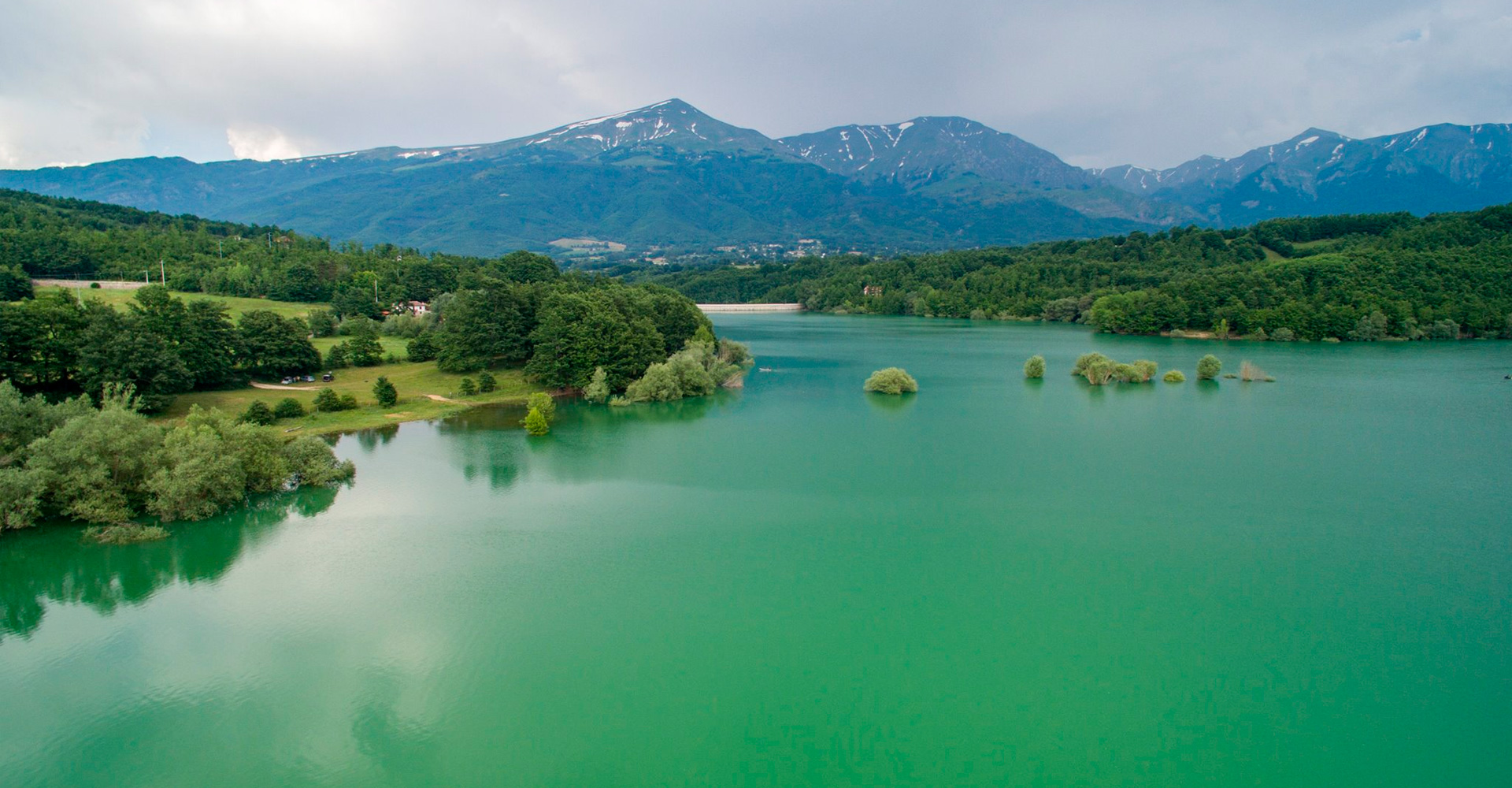
| Lake Type | Artificial | |
| Altitude | 2850 feet | |
| Surface | 1 miles2 | |
| Depth | 134 feet | |
| Distance from Rome | 86 miles | |
| Target | Pike, Perch |

| River | ||
| Altitude | 490 feet | |
| Spot Length | 27 miles | |
| Distance from Rome | 18 miles | |
| Target | Catfish, Asper, Chub |
BOAT
My boat is a 4355 alluminium alaska boat perfectly equipped for fishing, safe and unsinkable.
- Length 14 feet
- Engine 1 Mercury 20 Hp
- Engine 2 Rhino BLX 110 lbs 24 volt
- Bow Engine Minnkota Terrova 80 lbs 24 volt
- Fish Finder GPS 2 x Humminbird Helix MSI+
- Mega Live imaging
- Lithium Battery e 24 volt LitioStore
ADRIANO MARINI
BIO
My name is Adriano Marini and I am a professional AIGUPP fishing guide code ITA0108/21. I started fishing with my father at the age of 8. Through the years I have gained experience, by trying different techniques, to specialize in predators fishing; and I started practicing catch and release from a very young age. Since 2015 I have been a fishing guide with a specialization in pike fishing.
TV Series on Sky pesca TV "Pike Story". I am also a collaborator and editor about pike fishing for these magazines: Pesca spinning, Spinning passione and “Piscor magazine”. In 2015 together with Americo Rocchi we made the documentary: I segreti del luccio 2. My goal is to provide an unforgettable fishing experience: funny, educational and relaxing; always placing priority on nature respect and fish protection.


